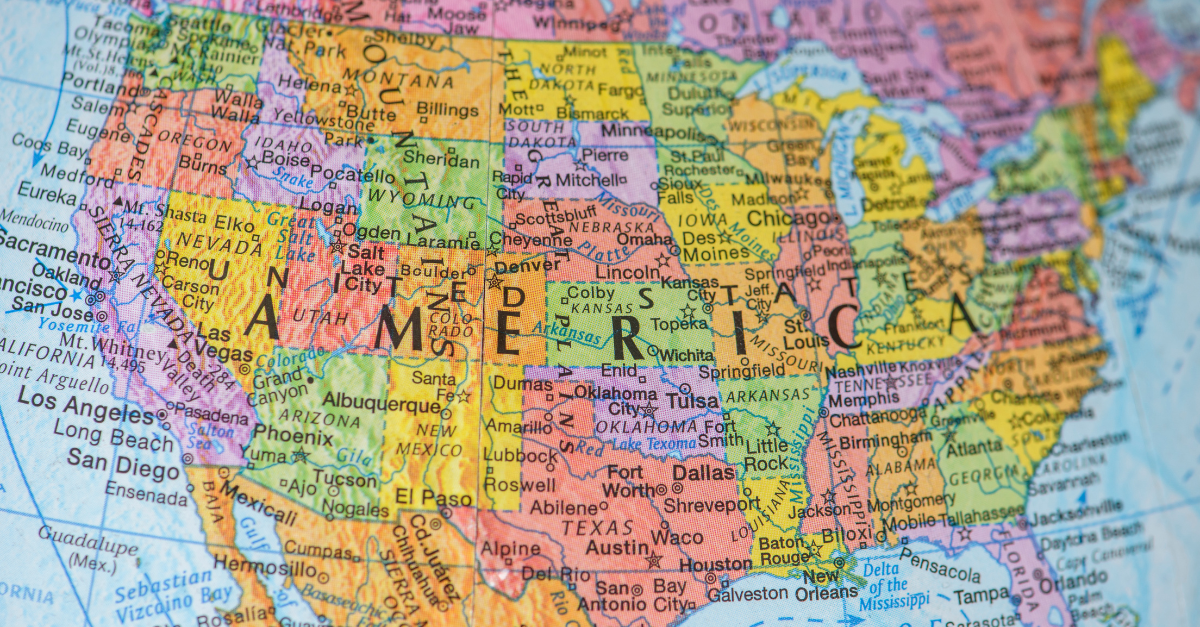.jpg)
US State-to-State Payroll Withholding: An Increasing Challenge With Our New World of Work
In the United States, employers must withhold an estimated value of monetary funds their employees will owe in state taxes at year-end. State withholdings are based on state-level taxable income that applies to where an employee is physically working, and tax rates vary significantly from state to state. The 2022 Topia Adapt survey found that 94% of employees agree they should be able to work from wherever they want as long as they get their work done. Knowing where employees perform their work is essential to ensuring appropriate payroll withholdings are applied based on the applicable state.
This article explores the risks associated with the new world of work and how to manage today's mobile workforce.
The New World of Work: New Risks
Many people have enjoyed the perks of remote work and have proven it to be an effective way of working. Others crave face-to-face collaboration. In an office atmosphere, everyone's situation is unique; flexible working can enable a work/life balance to suit everyone. But with Governments implementing tighter enforcement of cross-border movement and audit rates on the rise to recoup revenues from budget shortfalls, flexible working creates a new set of risks. Employees may be unknowingly creating tax exposure by working remotely out-of-state-from home, spending a week visiting family/friends in another state or country, or even just in the way they chose to balance their office/home landscapes. With 90% of HR professionals, confident employees have been self-reporting when working in another state or country, the reality is - only 33% of employees do so.
Different employee types will create a new set of risks, and companies will need the data to withhold taxes in line with state-to-state regulations accurately.
Remote Workers
The desire for employees working from home in HQ-adjacent counties or out-of-state presents the daunting challenge of ensuring up-to-date payroll withholdings, and employees might not be working where their employers think they are. 39% of employees who work remotely have been working in different states or countries than their home address.
Hybrid Workers
With 96% of employees ranking flexibility in working arrangements as a key factor when finding a new employer, it’s clear hybrid work is here to stay. And, the balance of remote and office work could become rapidly complex and overwhelming for those employees crossing state or city lines to commute into offices and work out-of-state from home.
Business Travelers
The return of business travel will see stricter enforcement of border controls. Proving how many days non-resident workers have spent in different jurisdictions will be essential to help defend against tax audits.
Managing Compliance for Flexible workforces
HR professionals must come to terms with the fact that managing a distributed workforce is a highly complex task, and classic self-reporting measures are woefully insufficient to ensure compliance across an entire mobile population. Below are three ways you can successfully manage today’s new world of work.
Adopt a Flexible and Remote Work Policy
Set clear guidelines to outline what is achievable for your company in the now. Communicate with employees to explain the associated risks to the business and individuals by working in certain states. Manager enablement will be vital to ensuring a successful policy roll-out.
Know Where Employees Work From
Employees continue to be comfortable with employers tracking their location at the country (94%), state (93%), and city (91%) levels. Organizations that articulate the ‘why’ behind tracking are more likely to experience positive employee responses and minimize compliance risk.
Prepare For An Audit
Undergoing a withholding audit turned into a complete nightmare for one global company, which recognized that manual tracking was not a sustainable solution. AllianceBernstein now uses Topia Compass to withhold taxes and understand where employees have crossed thresholds. Establishing an audit trail protects employees and businesses from unexpected and excessive fines.
Where your employees are working can significantly impact where your business and employees owe taxes and the amount of taxes owed. Topia Compass provides accurate visibility of employee footprint at a jurisdictional level to accurately calculate and accrue multi-jurisdiction payroll withholdings. Watch this 2-minute video to learn more.
-1.png)

